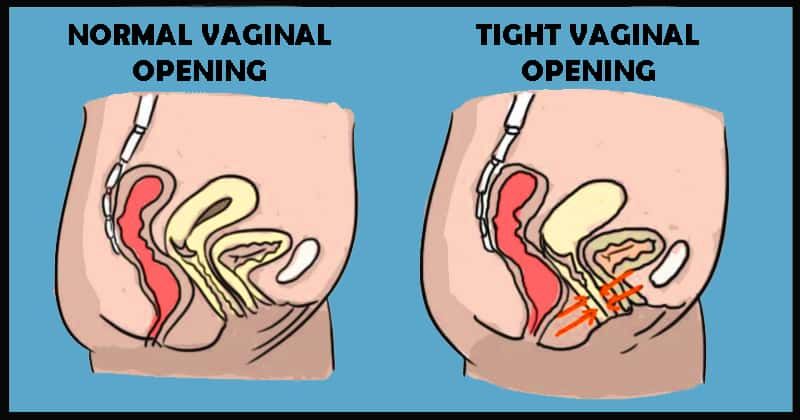Known as involuntary tensing of the vagina, vaginismus is something that not so many women experience. The muscles of a woman’s vagina squeeze or spasm while something is penetrating it, like a tampon, cup or penis. It is also known as vaginal tightness that cause a discomfort, burning, pain penetration problems, or the inability to have intercourse. This results from a limbic system response toward penetration, a protection signal is released and the body braces and protects against potential harm. There is no shame in this and it is something that can be treated. Most women do not know that they have vaginismus as the condition is not that spoken.

There are two major types of vaginismus:
Primary:
When a woman has pain every time something is entering her vagina or when she has never be able to insert anything into her vagina. This situation is called lifelong vaginismus. Some women may face a pain that generalized muscle spasms, resulting in the woman to stop breathing temporarily.
Secondary:
When a woman has has sex before with no pain, but then it is difficult or impossible to insert something in the vagina. This is called acquired vaginismus, it can happen from a specific event, such as an infection, menopause, a traumatic event, late development of a medical condition, childbirth or any surgery. These situations can be remedied.
The minor types of vaginismus are:
Global vaginismus that is always present and can be triggered by any object.
Situational vaginismus happens in only certain situations whether you are having a gynecological exam or inserting a tampon.
Symptoms:
Vaginismus symptoms can appear during the late teen years or early adulthood when a person has sexual intercourse for the first time. This condition can happen when someone is inserting a tampon or has a pelvic exam for the first time. Some women can develop vaginismus later in life and it can happen years without any problems. The spasms and discomfort can occur anytime whenever there is vaginal penetration. Some women do describe it as a burning or feeling like the penis has hit a wall. Other symptoms of vaginismus may include fear of pain or sex and loss of sexual desire. Do know that these symptoms are involuntary that means a woman can not control them without proper treatment.

Causes:
Vaginismus can be caused by physical and emotional stressors or both, and it can become anticipatory as the person can expect it to happen.
The emotional triggers are:
- fear of getting pregnant
- anxiety because of guilt or performance
- relationship problems, for example an abusive partner or feeling vulnerable
- traumatic life events, like a rape or history of abuse
- childhood experiences, such as exposure to sexual images
The physical triggers are:
- infection, such UTI or yeast infection
- health conditions, such as cancer or lichen sclerosis
- childbirth
- menopause
- pelvic surgery
- not enough foreplay
- not sufficient vaginal lubrication
- medication side effects
Rest assured, this problem can happen to anyone and there is a treatment that can help!
Treatment:
Get yourself diagnose for vaginismus, first the doctor will take a medical history and do a pelvic examination. The treatment might be different depending on the cause. There can be any possible underlying causes, that might need to be ruled out or treated first before concentrating on vaginismus. Most treatments reduce the automatic tightening of the muscles and the fear of pain. Some treatment includes a combination of the following:
- Pelvic floor exercises combines muscle contraction and relaxation activities to improve the control of the pelvic floor muscles. These are known as Kegel exercises.
- Education and counseling sessions help in providing information about sexual anatomy and sexual response cycle that can help the individual to understand their pain and the process their body is experiencing.
- Emotional exercises involve the person to identify, express and resolve any emotional triggers that might be contributing to their vaginismus.
- Reduction of sensitivity by insertion, which means that a woman has to touch the area close to the vaginal opening everyday without causing any pain. As soon as she is able to touch the area around the vagina, she will be able to touch and open the vaginal lips and insert a finger.
- Training to insert and dilate after the woman can do this without pain, she will learn to use a plastic dilator, to see if she can insert it without any pain and leave it there for 10 to 15 mins. If the woman feels comfortable, then only her partner will be allowed to insert his penis near the vagina and not inside. After that the couple can restart intercourse again.
Do know that vaginismus do not require surgery in most cases. If you feel that you are somehow concerned with this medical condition, do consult your doctor.



